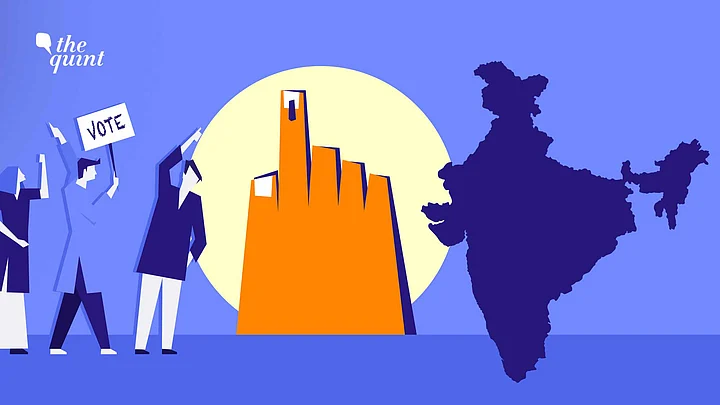(Extracted with permission from India's Experiment with Democracy: The Life of a Nation Through Its Elections by SY Quraishi, published by Harper Collins. Paragraph breaks have been added for readers’ convenience).
The issue of conducting simultaneous elections has been repeatedly raised by Prime Minister Narendra Modi over the last two years. The Indian economist and Indologist Bibek Debroy and former Officer on Special Duty for NITI Aayog, Kishore Arun Desai, in a paper addressed to NITI Aayog, had pointed out that apart from the 2014 general election, polls in about fifteen states were held between March 2014 and May 2016.
In some cases, elections to state assemblies were announced within a month of conclusion of elections to other state assemblies.
It is argued that if the country is always in electoral mode, it negatively impacts development activities in the states and at the national level.
In 2015, a parliamentary standing committee examined the issue and endorsed the suggestion. The EC also supported this in principle, subject to political consensus.
Exorbitant costs and prolonged disruption of development activities were the two main reasons cited.
But I would like to add another reason: elections are when communalism, casteism, corruption and crony capitalism are at their peak. Frequent elections mean there is no respite from these evils at all.
Internationally, there are several countries which hold simultaneous elections. Sweden’s county and municipal councils occur simultaneously with the general election every four years.
In South Africa, elections to the national and provincial assemblies are held simultaneously in a five-year cycle, while in Belgium, elections to the federal parliament are normally held every five years, coinciding with the European (and, consequently, also regional) elections.
In the United States of America, simultaneous elections are a reality. In many states, a voter chooses not just the US president, but also twenty different contestants on a single ballot, including members of the US senate and the House of Representatives, the state senate, governor, state attorney general and even the Supreme Court judge.
In India, however, there are various reasons why simultaneous elections, even if desirable, are not feasible, at least in the near future. Being a federal republic, every state in India follows its own political course.
What is one to do, for example, if a particular state witnesses an upturned majority after a few MLAs decide to shift ‘loyalties’? How are simultaneous elections to be continued in such a scenario?
Or as was the case in 1996, what happens if the Lok Sabha is dissolved within thirteen days of its formation? Do we also dissolve all the state assemblies? And what happens if one of the state assemblies is dissolved? Does the entire country go to the polls again?
The idea sounds problematic and appears against the ethos of democracy as it undermines the people’s choice. How can we dissolve state assemblies because of events happening outside the state (like the dissolution of parliament), when the assembly members have been democratically chosen by the people of the state?
Realizing these problems, NITI Aayog has proposed the holding of two elections in five years — elections to fourteen states to be held along with the Lok Sabha election in 2019 in the first phase, and elections to the remaining states to be held in October-November 2021. Once these elections are synchronized, then polls would be held in India once every two-and-a-half years.
This, however, seems to be a radical dilution of the original proposal to conduct elections at the national, state and panchayat levels at the same time.
With panchayat elections and its 30 lakh representatives now already out of the discussion and the bifurcation of the remaining two tiers of governance (4,120 MLAs and 543 MPs), what is left is a very watered-down version of the original proposal. It does not seem to be worth the effort in the face of serious questions being raised about the federal structure of the Constitution.
Further, frequent elections are not without their own benefits. Politicians are notorious for disappearing once an election is over. Frequent elections at least ensure that they ‘show their face’ to the people regularly.
Election time results in the creation of work opportunities at the grassroots level. That’s why people love elections. For the poor, this is the only power they have. Finally, separate elections at three tiers ensure that local, regional and national issues do not get mixed up.
Two recent developments have put a question mark on the authenticity of the proposal. First, Gujarat and Himachal Pradesh elections, which were always held simultaneously, could not be held together when political exigency decided otherwise.
More recently, when the Karnataka elections were held in May 2018, sixteen by-elections were held three weeks later, prolonging the MCC period and the consequent disruption of normal development activities. What moral authority is then left in the proposal?
Till simultaneous elections become a possibility, could we not look at alternative routes? The exorbitant cost of elections could be tackled by putting a cap on campaign expenditure by political parties.
Collection of private funds, especially corporate, could be banned, to be replaced by state funding of political parties (not elections), based on the votes obtained by them in the latest elections.
To deal with the second major reason for the proposal— namely, prolonged disruption of normal development activities — we could look at the possibility of reducing the duration of elections from the current two to three months to thirty-three days by making available more Central police forces.
Simultaneous elections are a far-reaching electoral reform, which can only be implemented by a political consensus. It is good that the Prime Minister has called for a national debate to evolve a national consensus through the Law Commission.
(SY Quraishi was the 17th Chief Commissioner of India. He has also authored several other books like 'The Population Myth' and 'An Undocumented Wonder: The Great Indian Election.')
